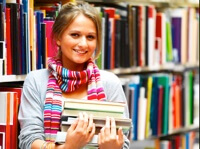Multicultural Society, Customs and Traditions
Typ práce: Referát
Jazyk:
Počet zobrazení: 7 082
Uložení: 268
MULTICULTURAL SOCIETY
People all around the world are naturally divided according to their appearance (the colour of their skin, the type of hair they have, the shape of their faces), their language, traditions, history, beliefs and culture.
Multicultural society is a society in which people from different cultures, people of different colours, nationalities, languages, beliefs, customs live together in one community. It is normal to meet people of various nationalities dressed differently and behaving differently especially in big cities because that is the place where the people come: searching a better life with better perspective. They either look for better-paid job or better opportunities. It is also the place where one can “hide” and gain a completely new identity because in big cities with crowds of people nobody cares about what you wear, the colour of your skin, or how weird your behaviour is.
Culture shock
- it is a disorientation of a person when visiting a new country either as a tourist or immigrant
- the most common problems are language barrier, generation gap, information gap, homesickness, boredom (no job, no friends) and a lot of theoretical knowledge
- people feel confused and nervous
- there is no existing way how to prevent it
Problem or a challenge?
If you live in a foreign country or stay longer there, often you can find both positives and negatives:
Positives
- You need to communicate so you have to learn the language (at least the basics)
- You eat there and probably it is not your food but local; you may find it tasty, know more about the way it is prepared and after coming back home you can make it
- You spend your free time there and become a part of the local community – you will get to know their traditions and the way they spend holidays
- You can go sightseeing and know more about their architecture
- You may find another type of life attractive
- It develops your intrapersonal skills because you have to find new ways how to cope with existing problems or challenges
- New opportunities may occur, you can learn different ways of life - It breaks down barriers between different ethnic groups - There is better understanding of different cultures, religions - It brings people new cuisines, languages, customs, traditions, clothes, art, music, literature, beliefs
Negatives
- You do not understand anybody; you do not speak their language
- You may feel alone knowing nobody there
- You are there without your family members to support you so you may feel homesick
- Bureaucratic problems like visas, work permits, insurance and pension schemes may occur
- You will always feel like a foreigner even after couple of years
- This society is sometimes divided – it leads to prejudice, discrimination and racism - There are some people who think that their religion and culture is superior, other ones are inferior - There are also tensions between people, because minorities want to preserve their cultures, languages and beliefs, minorities are afraid of losing their identity
- When there are people of the same nationality gathered at one place there may come into existence some gangs. Gang – word often linked with drugs, violence, guns and murders. They meet together often on regular basis and they separate themselves voluntarily. But there are groups of people gathered together because they are separated by the surrounding society and the gatherings are called ghettos.
Multiculturalism in cities is referred to as “melting pot” or “cultural mosaic”. It is called so because it is variable, different, fresh and spicy – simply not boring.
There are many big cities which are cosmopolitan or multicultural such as London where the British live next door to Pakistanis or West Indians. Their children attend the same schools and grow up shoulder to shoulder.
New York is as cosmopolitan as London but is not as mixed. Nationalities stay in their own areas, like the Russians in the Russian section, the Germans in the German section. Or at the place like Little Italy one can feel the Italian atmosphere even though you are in New York City.
The area of a city where many Chinese people live and where you can find many Chinese shops and restaurants is called Chinatown. The Chinatown street signs are in Chinese as well as English.
There is a wide variety of food and clothing, free English classes for immigrants to improve their ability to become a part of the new society etc.
Other cosmopolitan cities are: New York, Sydney, San Francisco, Ottawa, Melbourne, Mexico City, Canberra, Chicago, Prague, Paris, Moscow etc.
Slovakia
The majority of the Slovak population is Slovak. The country also has several minorities, the biggest are Hungarian (0.5 mil. – in the south), Ruthenian (in the east), Roma (without a concrete territory), Ukrainian. The Slovak republic guarantees the minorities full development of culture, the use of different languages, the right to form institutions, the right of education in their language. All these rights are stated in the Constitution.
Roma minority in Slovakia The Romanies originated somewhere in what is now India, they typically travelled from one place to another, they did various jobs in the past – basket makers, fortune tellers, musicians etc. Today, people don't trust them, because of their way of life – not because of the colour of their skin. They don't wash themselves, are dirty, don't keep clean, destroy flats built by the state, steal, commit crimes etc. They start their families very early and have a lot of children, don't want to work. With the growing number of this population they have more and more rights. For example, they are becoming mayors of some villages, even though they can't read. Slovaks are working hard to integrate them into society. There are many organizations trying to protect them. They build them flats, give them lots of social benefits.
Hungarian minority in Slovakia There were mostly diplomatic tensions between Slovak and Hungarian nationalities recently. The ethnic hatred was especially initiated by the former members of The Slovak National Party (J. Slota – the Slovak nationalist). In the south of Slovakia there are some bilingual schools, bilingual names of towns (villages), books, news in Hungarian language etc. They also have theatres in Komárno and Košice.
Ruthenian minority in Slovakia They also have their own language, literature and also the theatre of Alexander Duchnovič in Prešov. They typically stick to their folk traditions.
Traditions and holidays
In case two people of different nations/cultures live together or are married together the most visible difference between two cultures is when they want to spend some holiday together of course the way they are used to.
Mixture of nationalities and cultures can definitely enrich us. The delicious food we have not eaten before, strange odours, colourful combinations, unique seasoning and the fusion of traditional and new it all can surprise us. As we want to know more, taste more, try more.
Talking about spaghetti, pizza or pasta with tomato sauce and cheese, have we ever realized that it is an Italian food? Or rice and sushi typical for Japan; hamburger from America, German sausages, jazz music having its origin in the States.
CUSTOMS AND HABITS
Because of the globalization of society, there are several customs and traditions copied from one society to another. For example, originally Irish (later American) Halloween has been adapted in Slovakia, as well as St. Valentine's Day. The day after originally "pagan" Halloween, people in Slovakia celebrate religious All Saints Day (1. 11.). They visit cemeteries, put flowers and wreaths and light the candles on the graves of their dead friends or family members. Halloween (31. 10.) is a holiday connected with colourful costumes (of ghosts, demons, witches, vampires, monsters), loud singing and dancing, having parties. Children go from house to house, screaming "trick or treat" – they usually get sweets or some coins. People decorate their houses with carved pumpkins, light bonfires, watch horror films, tell scary stories etc. On St Valentine's Day (14. 2.) people in love give one another some greeting cards, chocolate or toys to express their love. This holiday is highly commercialized, shops are decorated with red hearts, roses etc. People all over the world love Christmas. Americans put up Christmas trees at the beginning of December. Christmas decorations, trees, lights are everywhere. In Slovakia people open their presents on December 24th. In Britain children hang their stockings for Santa Claus (Father Christmas) to fill them. They open their presents on Christmas Day (December 25th). The traditional British Christmas dinner is stuffed turkey and Christmas pudding. In Slovakia it is fried carp and potato salad, sauerkraut soup with sausages and mushrooms. We also traditionally eat apples as symbols of health, waffles with honey, nuts and garlic. People go to church at midnight to celebrate the birth of Jesus Christ. On December 6th we celebrate St Nicholas. Children polish their boots and put them at the window. They believe that St. Nicholas comes and puts some presents in there. Adults put on masks of St. Nicholas, angel and devil. There is no St Nicholas Day in Britain. On New Year's Eve (31. 12.) people stay up till midnight to see the New Year coming. They dance, sing, drink champagne and toast, watch fireworks. New Year's Day (1.1) is a public holiday, we spend the day with the family, we make resolutions. On January 6th there is Epiphany. It is a Christian holiday, celebrating the visit of Three Wise Men (Kings) to the baby Jesus. Easter is a typical spring holiday. It is an ancient symbol of spring and new life. Christians remember Christ's death on the cross (Good Friday) and his resurrection (Easter Sunday). The typical symbols of Easter are eggs, lamb. On Easter Monday boys in Slovakia whip girls with willow and throw water at them, because they want them to stay healthy and fresh. Girls give them chocolate eggs or money. Typical Easter meal is smoked ham, hard-boiled eggs, horse radish etc. In the US sweets and chocolate eggs are left out in the gardens an Easter morning and children have to search for them. They believe that Easter Bunny brought them. Families often paint eggs and decorate Easter trees with them.
There are some other holidays or traditions both in Slovakia and Britain: All Fools' Day (April 1st), Mother's Day (in May) etc.
Other traditions: When somebody dies, people send cards and letters to their families, place flowers or wreaths on their graves, light candles. They also send greeting cards at Christmas, Easter, birthday cards, Thank you cards, Valentine's cards etc. Man gives a diamond ring to a woman when he asks her to marry him. Sometimes they also have engagement parties.
Folk traditions in Slovakia It is an old tradition in Slovak villages to make a doll called Morena in spring and throw it in the water. It is a symbol of the change of seasons – spring replaces winter. There are folk ensembles, using folk instruments (fujara, dulcimer), wearing folk costumes. Fašiangy festivals are one of the oldest traditions, held at the end of February/beginning of March. People, dresses in funny clothes dance, sing and celebrate the end of winter and welcome spring. The next day Lent starts – the period of forty days from Ash Wednesday to the day before Easter, during which Christians give up food or activities they enjoy in memory of Christ's suffering.
In recent years we have witnessed several serious cultural and religious clashes in the form of
terrorists attacks in the USA, Moscow, France, Belgium and other countries.
- World Trade Center in New York, Moscow Metro Bombing, Boston Marathon Bombing, Charlie Hebdo shooting in Paris as a reaction to a series of satirical cartoons of Muhammad published in the newspaper.
- a clash between the Muslim world and the Western civilization
Reasons of terrorism:
- social and political injustice - terrorists choose violence because they feel they don't have any other choice.
- religious fanaticism, extremism (Islamic State - Iraq and Syria, Taliban, Al Qaida)
- sometimes terrorist acts are committed by people who believe they are defending their religion
- the reasons of wars are political control, control of resources (e.g., land, money, food supplies, transportation and trade routes) or they have to do with a particular leader’s ambitions (i.e., being remembered as a great man).
- A. Hitler, Stalin, Churchill, F. Castro (Cuba), Che Guevara, H. Chavez (Venezuela), Yasser Arafat
(Palestine), Saddam Husain (Iraq), V. Putin (Russia / Ukraine conflict - Krym)
- science and technology make wars worse - nuclear weapons...
| Podobné práce | Typ práce | Rozsah | |
|---|---|---|---|
|
|
Multicultural society | Ostatné | 4 917 slov |
|
|
Multicultural society definition | Maturita | 3 705 slov |
|
|
Multicultural Society - basic information | Maturita | 655 slov |
|
|
Multicultural society | Maturita | 380 slov |
|
|
Multicultural society | Maturita | 4 530 slov |
|
|
Multicultural Society (slovné spojenia a frázy) | Maturita | 593 slov |
|
|
Multicultural Society – maturitná téma | Referát | 681 slov |
|
|
Multicultural Society + questions | Referát | 284 slov |
|
|
Multicultural Society téma | Maturita | 710 slov |
|
|
Multicultural Society | Učebné poznámky | 810 slov |
|
|
Multicultural Society – Opis obrázku na VIDEO | Maturita | 10 slov |
|
|
Multicultural Society – Vypracovaná téma na VIDEO | Maturita | 10 slov |
|
|
Multicultural Society – Vypracované zadanie na VIDEO | Maturita | 10 slov |
|
|
Multicultural society (topic, essay, vocabulary) | Ostatné | 724 slov |
|
|
Multicultural Society | Referát | 783 slov |
Vyhľadaj ďalšie študentské práce pre tieto populárne kľúčové slová:
#multicultural society #cultural differences between slovakia and UK #tradition #customs and traditions #society #multicultural society maturita #multicultural society – #culture shock #types of society. #orava my native region #multicultural society Traditions, customs and holidays: #Protect your skin #multicultural #multiculturat society #american way of life #common problems of minorities #problems with imigrant #multiculturalism #UK multiculturalism #orava my native region customs and traditions















